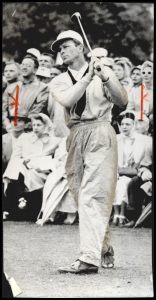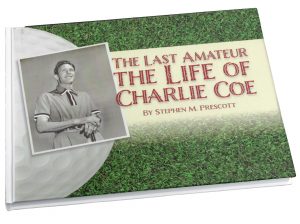Even cancer couldn’t put an end to Dr. Stephen Prescott’s final passion project
As a medical researcher, Dr. Stephen Prescott wrote prolifically. In a career that spanned almost a half-century, he authored or co-authored more than 270 scientific publications and textbook chapters.
Those pieces carried immense weight in the medical research community. They cast new light on areas ranging from cancer to heart disease, and scientists worldwide cited them almost 40,000 times. But with titles like “Platelet-activating factor” and “Intracellular unesterified arachidonic acid signals apoptosis,” the learned tracts didn’t exactly scream “Read me!” to the general public.

When Prescott interviewed to become president of OMRF, Board Chair Len Cason wondered whether the candidate – a Texas native who’d spent the previous quarter-century in Utah – had done his homework on the Sooner State. “I said, ‘Steve, do you know much about Oklahoma?’” remembers Cason. “He said, ‘Not really.’” But when Cason quizzed Prescott further, it turned out the physician-scientist had done precisely what you’d expect of someone who’d devoted his life to research: He’d read a dozen books on Oklahoma history.
Not surprisingly, Prescott got the job. When he came to Oklahoma to take the helm of OMRF, he brought his sense of curiosity with him. He also brought his golf clubs.
After a decades-long hiatus, Prescott had recently returned to the sport. “He saw golf as a good way to be with people on a social basis, and he could also mix in a little business,” says his wife, Susan. A former collegiate baseball player, Prescott could hit the ball a long way. But as any golfer (or person who’s ever watched the game) knows, controlling those drives can prove challenging.
“Steve kind of had a temper,” says Susan Prescott. “And when the ball didn’t go where he wanted it to” – a not uncommon occurrence – “it made him mad.”
Still, Prescott continued to work on his game, and he grew to (mostly) enjoy it.
He played most often at the Oklahoma City Golf & Country Club. There, in the pro shop, he spotted memorabilia highlighting the achievements of a golfer he’d never heard of. His name was Charlie Coe.

A native of Ardmore, Oklahoma, Coe won the U.S. Amateur championships in 1949 and 1958. He’d played in the Masters Tournament 19 times. In 1961, he was runner-up in the entire tournament, the best finish ever for an amateur. Even today, he maintains a stranglehold on records for amateurs at the Masters. Yet he never turned pro.
The more Prescott learned about Coe, the more intrigued he grew. So, he approached Coe’s widow, Elizabeth, who also happened to be a member of OMRF’s Board.
“I asked her where I could find a biography of Charlie so I that could learn more about his life and career,” Prescott later wrote. When she told him there wasn’t one, Prescott resolved to fix that. “I thought there needed to be a book about Charlie Coe.”
Prescott connected with Coe’s son Rick. In a series of conversations, Rick Coe shared his father’s story and scrapbooks his mother had assembled. He also gave Prescott a gift that most biographers only dream of: drafts of an unpublished autobiography that Coe had worked on with Daily Oklahoman sportswriter Bill Inglish.
The pair had spent time together in the final years of Coe’s life. But Coe’s children had no idea the sessions had resulted in anything more than a way for their father to reminisce about his life until after he died in 2001. “We moved our family offices, and we found the manuscripts,” says Rick Coe.
Armed with this trove of information, Prescott set to work chronicling the life of a golfer he’d never met. To get a better sense of the man, he interviewed family, friends and former competitors, a group whose ranks Father Time was rapidly thinning. When he could find time around his OMRF schedule, Prescott traveled to courses where Coe had registered some of his greatest performances. He also paid visits to those who’d battled Coe on the links, understanding that the richest portraits are usually painted with the color that face-to-face interactions can provide.
•••
Prescott did most of his writing on weekends, and his process differed markedly from the one he employed in his day job. “For scientific articles, he’d sequester himself in his office,” Susan Prescott says. “With the book, he spread out in the dining room with Liz Coe’s big scrapbooks open on our pool table.” Frequently, a golf tournament played on television as he wrote. In the often stressful life of a CEO and researcher, she says, “it was a relaxing, pleasurable escape.”
Still, with Prescott responsible for running OMRF, progress on this passion project could be fitful. It stalled further with Elizabeth Coe’s death in 2018 and, finally, Prescott’s own cancer, first diagnosed in 2017. By the spring of 2021, largely confined to a wheelchair and his bed, Prescott asked Frank Merrick, a close friend who was also Coe’s nephew, to come to his home.

“Steve handed me the transcript of what he’d written and said, ‘Frank, promise me you’ll get this published,’” remembers Merrick. He swore he would. “But,” says Merrick, a retired nonprofit executive, “I had no idea how to do it.”
Prescott died in May 2021. Merrick thought the unfinished book might find a home at the Oklahoma Hall of Fame, whose publishing arm specializes in titles on the state’s history. He met with Gini Moore Campbell and Bob Burke, who’d worked as a publishing and writing team on more than 100 books for the Hall of Fame, and they agreed to take it on.
The manuscript, Burke soon discovered, needed little work. The story was impressionistic, moving in and out of key tournaments to reminiscences about Coe as both a person and a player. “I liked the structure and left it that way. I just did some editing to make certain it conformed to Hall of Fame standards,” says Burke.
Campbell laid out the book in a coffee table format rich with vintage photos, and the first copies of “The Last Amateur: The Life of Charlie Coe” were unveiled at a small gathering of Prescott’s friends and family in March. The book is now available at the Hall of Fame and through ScissortailGifts.com.
Prescott may have been known for his scientific talents, but his final project also proved him a more than capable biographer. “Without ever knowing Charlie Coe, Dr. Prescott captured his essence,” Burke says. “I just wish he could have lived to see his work in print.”
—
Read more from the Summer/Fall 2023 issue of Findings
Oklahoma’s Treasure
Voices: Jim and Norma Freeman
Ask Dr. James: Preventing Alzheimer’s Disease
Matters of the Heart
The Aerialist
77 for 77
A New Beginning
End of an Era


